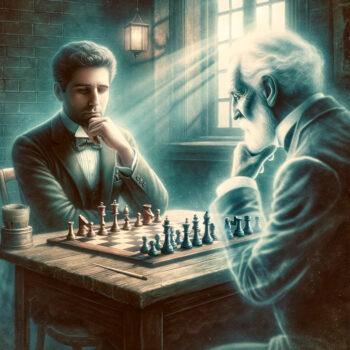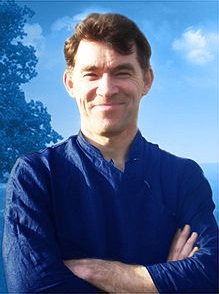Guest writer for Wake Up World
In 1985, the strangest chess match in history began. Wolfgang Eisenbeiss, a Swiss amateur chess player with an interest in parapsychology, decided to try to arrange a match between a deceased grandmaster, and a living one. He approached the living grandmaster, Viktor Korchnoi—known for his own interest in parapsychology—who agreed to the experiment. The medium, Robert Rollans, claimed to have contacted a Hungarian grandmaster called Geza Maroczy, who had died in 1950. Maroczy was a Hungarian who had once been ranked the third-best player in the world.
[pro_ad_display_adzone id=”110028″]
Robert Rollans didn’t play chess himself, but Maroczy communicated the moves to him. The game continued for 48 moves, with Korchnoi winning. Analysis by chess experts, including Bobby Fischer, the most famous player of his time, verified that Maroczy’s abilities were at grandmaster level. The experts also attested that Maroczy’s style of play was rather old-fashioned, and consistent with Maroczy’s actual style.
In addition to the game, the discarnate (as in non-physical) Maroczy “wrote” a 38-page text containing many specific details about his life. Wolfgang Eisenbeiss followed this up with 91 detailed and specific questions, which he directed to Maroczy through the medium. An investigator found that, of the 81 answers where information was available, 79 were correct.
How can we explain this strange case? Although Robert Rollans claimed not to play chess, perhaps he was really a highly proficient player. However, given that he would have to play at the level of a grandmaster, this seems unlikely. Perhaps the medium (or Eisenbeiss) phoned other living grandmasters to ask their advice. This is theoretically possible, but no grandmasters have ever reported being contacted. In addition, this wouldn’t fit with Maroczy’s distinctive, old-fashioned style.
Or—unthinkable as it may seem—is it possible that the medium was actually in contact with the spirit of Maroczy, who was communicating the moves to him? This would obviously mean that Maroczy was somehow still alive in some form, in a different realm or dimension, 35 years after his physical death. (For further information on this case, see here.)
The Puzzle of Mediumship
The idea that mediums can somehow contact deceased people may sound absurd. There is no doubt that some modern-day “mediums” are fraudulent or self-deluded. Some ask generic questions and make high-probability guesses until it seems as though they are providing specific details. In some cases, they may not even bother to provide specific details, as they know that bereaved people are often ready to pounce on even the vaguest information about their loved ones. The activities of such fraudulent mediums can be replicated quite easily by magicians and illusionists.
However, this doesn’t necessarily invalidate the whole field of mediumship, just as the fact that some doctors are quacks doesn’t invalidate the whole medical profession. In fact, there have been many highly proficient mediums whose ability to elicit highly accurate and detailed information about deceased people, and even to express their abilities and personality traits, has never been explained in conventional terms. Since the 19th century, many high-level mediums have been rigorously and repeatedly tested by scientists and other observers—in some cases for decades—without evidence of fraud.
One of the most famous was Leonora Piper, who was born in 1850. Piper was probably tested more extensively than any medium in history. The great psychologist William James conducted many tests with Piper and sent 25 of his colleagues and acquaintances to see her under pseudonyms. Piper startled James’s sitters (the term used for people who visit mediums) with accurate descriptions of deceased people’s appearances and activities. She relayed communications from a wide range of deceased relatives and friends of the sitters, including many small and highly specific details. She frequently passed on relevant messages from discarnates, often using appropriate body language. As a result of these tests, James wrote, “I now believe her to be in possession of a power as yet unexplained.”1
Empirical Research
Even more striking, in recent years there have been several highly rigorous scientific studies of high-level mediums, with successful results, including double, triple and even quintuple-blind studies. Researchers, such as Julie Beischel at the Windbridge Research Institute, have taken stringent measures to exclude any possibility of suggestion, fraud or “sensory leakage” (when information is unconsciously transferred between the medium and sitter).
Such studies use a “proxy sitter” so that the medium has no direct contact with the actual sitter (that is, the person associated with the deceased person, or discarnate). The medium is simply given the name of the deceased person and asked to contact them. The medium doesn’t know the name in advance, which removes the possibility of fraud. The medium then provides a reading, providing as much detail as they can about the discarnate’s appearance, personalities, hobbies and interests, cause of death and so on. The sitter is given the transcript, together with a transcript of a reading from the same medium with a different sitter. The sitter has to pick the transcript that is relevant to them and then to rate the accuracy of the information. The procedure is repeated many times over in different sittings with the same medium.2
Strictly controlled studies with this type of protocol have shown a consistent, and highly significant, “strike rate” of around 75 percent.3 As a group of researchers wrote recently, the findings of such studies strongly suggest that “certain mediums can report accurate and specific information about the deceased loved ones (termed discarnates) of living people…without any prior knowledge about the sitters or the discarnates, in the complete absence of any sensory feedback, and without using fraud or deception.”4
In 2020, a meta-analysis of all the significant medium studies from 2001 to 2019 was published, including only papers with the most stringent controls. Analysis of the statistics showed that the mediums were scoring significantly higher than chance. As the researchers commented, “The results of this meta-analysis support the hypothesis that some mediums can retrieve information about deceased persons through unknown means.”5
William James famously said in relation to Eleanora Piper, “To upset the conclusion that all crows are black, there is no need to seek demonstration that no crows are black; it is sufficient to produce one white crow; a single one is sufficient.”6 In the case of mediumship, we have many white crows—so we may have to revise some of our assumptions about human life, no matter how incomprehensible the alternatives may seem.
References
1. Myers, F. W. H., Lodge, O., Leaf, W. & James, W. (1890). A record of observations of certain phenomena of trance. Proceedings of the Society for Psychical Research, 1889–90, 6, pp. 436–659, p. 653
2. See Beischel, J. et al. (2015). Anomalous information reception by research mediums under blinded conditions II: replication and extension. Explore, 11(2):136-42.; Beischel, J. & Schwartz, G. (2007) Anomalous information reception by research mediums demonstrated using a novel triple-blind protocol. Explore, 3(1):23-
3. Barušs, I & Mossbridge, J, (2016). Transcendent Mind: Rethinking the Science of Consciousness. Washington, DC: American Psychological Association.
4. Rock, A, et al., (2014). Discarnate readings by claimant mediums: Assessing phenomenology and accuracy under beyond doubt-blind conditions. Journal of Parapsychology, 782, pp. 183–194, p. 183.
5. Sarraf, M. et al. (2020). Anomalous information reception by mediums: A meta-analysis of the scientific evidence. Explore online pre-publication. DOI: 10.1016/j.explore.2020.04.002.
6. James, W. (1896). Address of the president before the society for psychical research. Science, 3(77), 881-888, p. 884
About the author:
Steve Taylor is a senior lecturer in Psychology at Leeds Beckett University, UK. His latest books in the US are The Calm Center and Back to Sanity: Healing the Madness of the Human Mind. He is also the author of The Fall, Waking From Sleep, and Out Of The Darkness. His books have been published in 19 languages. His research has appeared in The Journal of Transpersonal Psychology, The Journal of Consciousness Studies, The Transpersonal Psychology Review, The International Journal of Transpersonal Studies, as well as the popular media in the UK, including on BBC World TV, The Guardian, and The Independent.
Connect with Steve at StevenMTaylor.com.
This article, Inexplicable Communications, was originally published on psychologytoday.com and reproduced with permission.
[pro_ad_display_adzone id=”110027″]








